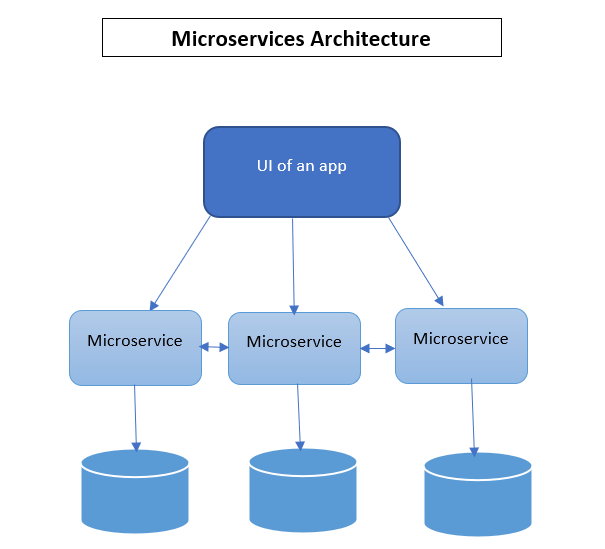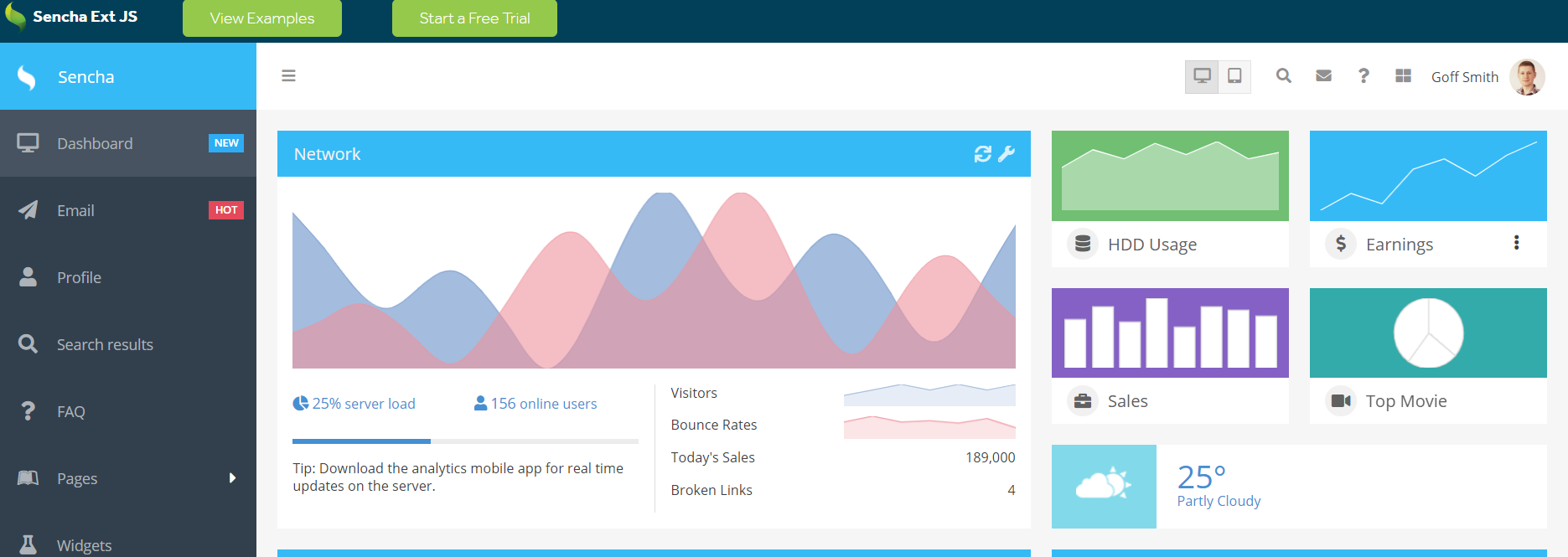Build Modern Web Apps With Ext JS Framework

As the world is moving towards digitization, it has become essential for businesses to increase their online presence. For this reason, companies worldwide are creating their own web and mobile apps. When it comes to web apps, they enable businesses to communicate more effectively with customers and build brand loyalty. However, traditional apps are not effective anymore. Customers today want fast and user-friendly apps that are available all the time from anywhere and have rich user interfaces. As a result, more and more businesses are now focusing on building modern web apps. These apps are fast, highly flexible, scalable, secure, and cost-effective. Additionally, modern web apps have highly interactive and usable user interfaces.
However, creating such apps involves several complex and time-consuming tasks. Hence, many developers and businesses now use a robust JS framework like Ext JS to accelerate the modern web app development process.
In this article, we’ll discuss the characteristics of modern web apps and show you how Sencha Ext JS can help you build such apps.
What Does Modern Web Application Development Mean?

The trend of modern web application development is increasing day by day. In the past, web apps could only be used on a desktop computer. However, modern web apps are responsive. This means they are designed for different screen sizes and devices, such as PCs, laptops, smartphones, and tablets. Additionally, most of today’s apps are cloud-based, which means you can access them anytime from anywhere. These apps communicate efficiently via web APIs and offer rich user experiences.
Some other characteristics of modern web apps include:
- High speed
- Scalable
- Flexible
- Cost-effective
- Enhanced compatibility
What Is User Interface Design?

User interface (UI) design refers to building interfaces in software, mainly focusing on style and looks. However, UI design isn’t only about creating a beautiful interface of an app using buttons, menus, and other UI elements. It’s essentially about how the users interact with the app. Hence, UI is about how your app looks and how it works. When designing a UI, designers must ensure it has all the elements that users need to interact with the app easily.
Here are the key characteristics of a good user interface:
- UI should be clear and involve responses, metaphors, etc. In other words, it should avoid ambiguity. However, adding too much text and labeling everything can complicate the interface. A good UI is clear and concise at the same time.
- It should be responsive and fast.
- Common UI elements should perform predictably. For example, folder-style tabs are mainly used for navigation.
- UI should be consistent across the app.
- UI should be highly functional and beautiful at the same time.
What Is A Modern Web Application Architecture?
A web app architecture refers to a layout or blueprint that creates a connection between different components, servers, databases, middleware systems, and user interfaces of a web app. The web app architecture also defines the logical interaction between client-side scripts and server-side scripts. The client side is also called the front end of the web app, where user interaction happens. It is built using HTML, CSS, and JS. The application server-side or the back-end code is present on the app’s server. Back-end code is written using programming languages like Python, PHP, and Java.
What Are The Types Of Modern Web Apps Architecture?
There are three main types of modern web application architecture. Which architecture you should use for your web app depends on different factors, such as required functionality and features, app logic, etc.
Here are the three types of modern web apps architecture:
Single Page App Architecture
Single-page apps (SPAs) are web apps that dynamically rewrite the existing web page with the latest data from the web server. This means these apps don’t require users to reload the web page to get new data. This is done using JavaScript to update the current web page with recent data. A SPA offers a great user experience and seamless performance. Some examples of single-page apps include Twitter, Facebook, and Gmail. For example, when you open Gmail in your web browser, you don’t have to reload the page repeatedly to see new emails.
Microservice Architecture

When we use microservices architecture, we develop a web app as a set of services. The apps built using microservice architecture consist of many loosely coupled services that we can deploy independently. Additionally, these services are easy to maintain and test and communicate with each other via REST APIs. Each service executes a unique/single function and has its own codebase. Hence, you can scale each service independently as needed. Many modern web apps, including cloud-native apps, use microservices architecture. For example, tech giants like Amazon, Netflix, and eBay use microservices architecture.
Serverless Architecture
When you use serverless architecture, you don’t have to worry about managing the infrastructure to develop and run your web apps and websites. It’s because these apps are hosted on servers, and the cloud service provider is responsible for providing and maintaining the infrastructure, including storage and servers. Serverless architecture reduces the burden on IT teams and is cost-effective.
What Are The Principles Of Modern Web Application Development?
Fantastic User Experience
Providing an exceptional user experience is a key feature of any modern web app. One way to deliver a great user experience is to understand who your end-users are and the objective behind building the web app and then designing the app accordingly.
Higher Security
Another crucial feature of today’s modern web applications is security. Business web apps contain sensitive business and customer data. Hence, it’s essential to focus on security from the beginning to keep your app safe from cyber attacks and prevent security breaches.
Building a Fast And Quality Application
Users today have become less patient and have shorter attention spans. Hence, modern web apps should be able to handle more data faster. Otherwise, your app will be slow, which can quickly drive away users. Additionally, your app should load quickly when users open it. This not only improves the user experience but is also helpful for SEO (Search Engine Optimization.)
How To Build Modern Web Apps?
Here are the key steps for building a modern web app:
- Sourcing the idea and conducting market research
- Defining the app functionality. This step includes defining all the functions and tasks that you want your app to perform.
- Write workflows for your app, such as user signup, user login, password change, etc.
- Prototyping the UI. This involves creating the blueprint of your web app with an interactive display.
- Building a secure database of your web app to store app data.
- Build the front end of your web application,
- Build the back end of your app.
- Testing your web app.
- Launch the app.
What Is Ext JS, And How Can It Help Build Modern Web Apps?

Sencha Ext JS is a powerful JavaScript framework for creating highly functional modern, progressive web and mobile apps. The apps built with Ext JS are fast, secure, and scalable, and they can run on all modern browsers and devices. It offers more than 140 beautiful and high-performance UI components, such as navigational components, informational components, and input controls. These components are designed and tested to work together flawlessly in web applications. Users can also use extensions from the Sencha community.
Ext JS also has a layout manager that helps manage the display and control of the data and components across several screen sizes, devices, and browsers. Additionally, the responsive config system enables app components to adjust to the device orientation, such as portrait or landscape.
Ext JS UI Components
Ext JS offers a wide range of UI components. Here are the most common ones:
- Buttons
- Grids
- Pivot grid
- Menu
- Drop-down list
- Icons
- Progress bars
- Carousels
- Calendar
- List box and many more
Sencha Tools
Ext JS also has several supporting tools for building reliable modern web apps quickly:
Sencha Architect: Offers drag-and-drop features, so you spend less time on manual coding.
Themer: Allows users to create customized web apps using graphical tools without writing any code.
Sencha Stencils: A complete UI asset kit for Sketch, Adobe Illustrator, and Balsamiq.
Cmd: Sencha cmd is a command line tool that offers lifecycle management features, such as scaffolding, code modification, production build generation, and more.
Sencha Test: A tool for testing your Ext JS web apps.
Conclusion
Modern web app development is on the rise. It involves creating fast, flexible, scalable, and cloud-based single-page web apps. Using Ext JS and Sencha tools, you can quickly create a high-performance modern web app.
Frequently Asked Questions (FAQs)
What are modern web apps?
A modern web app is a computer program built using the best practices of modern web development. It essentially utilizes web browsers.
What is a progressive web app?
Progressive web apps refer to web apps that are built using CSS, HTML, and JS. Unlike traditional apps, these apps are compatible with web platforms as well as mobile platforms.
Start using Sencha Ext JS today and build modern web apps quickly!

By 2026, Gartner says 80% of apps will be built using low code tools. That’s…

Did you know that nearly 90% of startups fail? And one of the biggest reasons…

The Sencha team is excited to announce the latest Sencha Rapid Ext JS 1.1.1 release…









